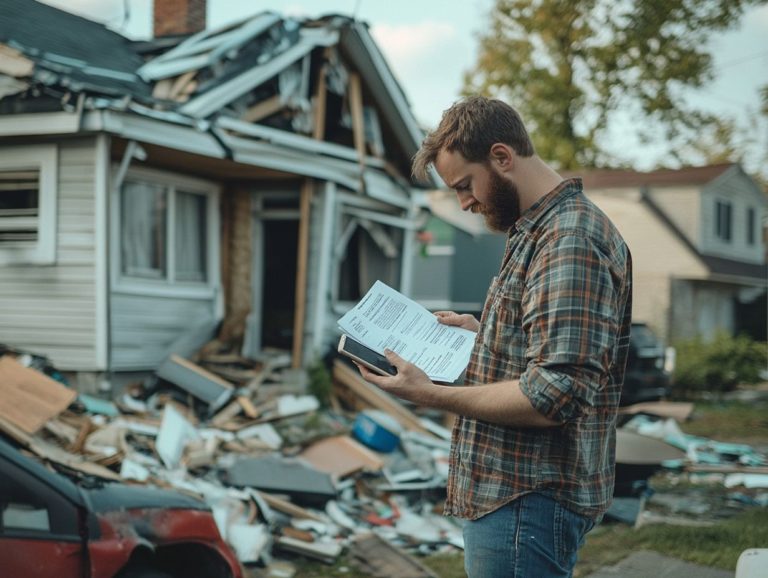Does Home Insurance Cover Landscaping Damage?
Navigating home insurance can be confusing!
Many homeowners overlook the nuances of landscaping damage in their policies.
This article clarifies what damage home insurance covers, addressing common concerns like fire and theft while focusing specifically on landscaping damage.
It also provides guidance on how to file a claim and what documentation you ll need. You ll find practical tips for safeguarding your outdoor investments.
Let s dive into the essential details of home insurance coverage for landscaping!
Contents
- Key Takeaways:
- Understanding Home Insurance Coverage
- Types of Damage Covered by Home Insurance
- Landscaping Damage and Home Insurance
- How to File a Claim for Landscaping Damage
- Preventing Landscaping Damage
- Frequently Asked Questions
- What is landscaping damage and does homeowners insurance cover it?
- What are common causes of landscaping damage?
- El seguro de hogar est ndar cubre t picamente el da o al paisajismo?
- Existen pol ticas adicionales o opciones de cobertura para proteger contra el da o al paisajismo?
- C mo puedo asegurarme de que mi paisajismo est cubierto por el seguro?
- Puedo presentar una reclamaci n por da o al paisajismo causado por mi propia negligencia?
Key Takeaways:
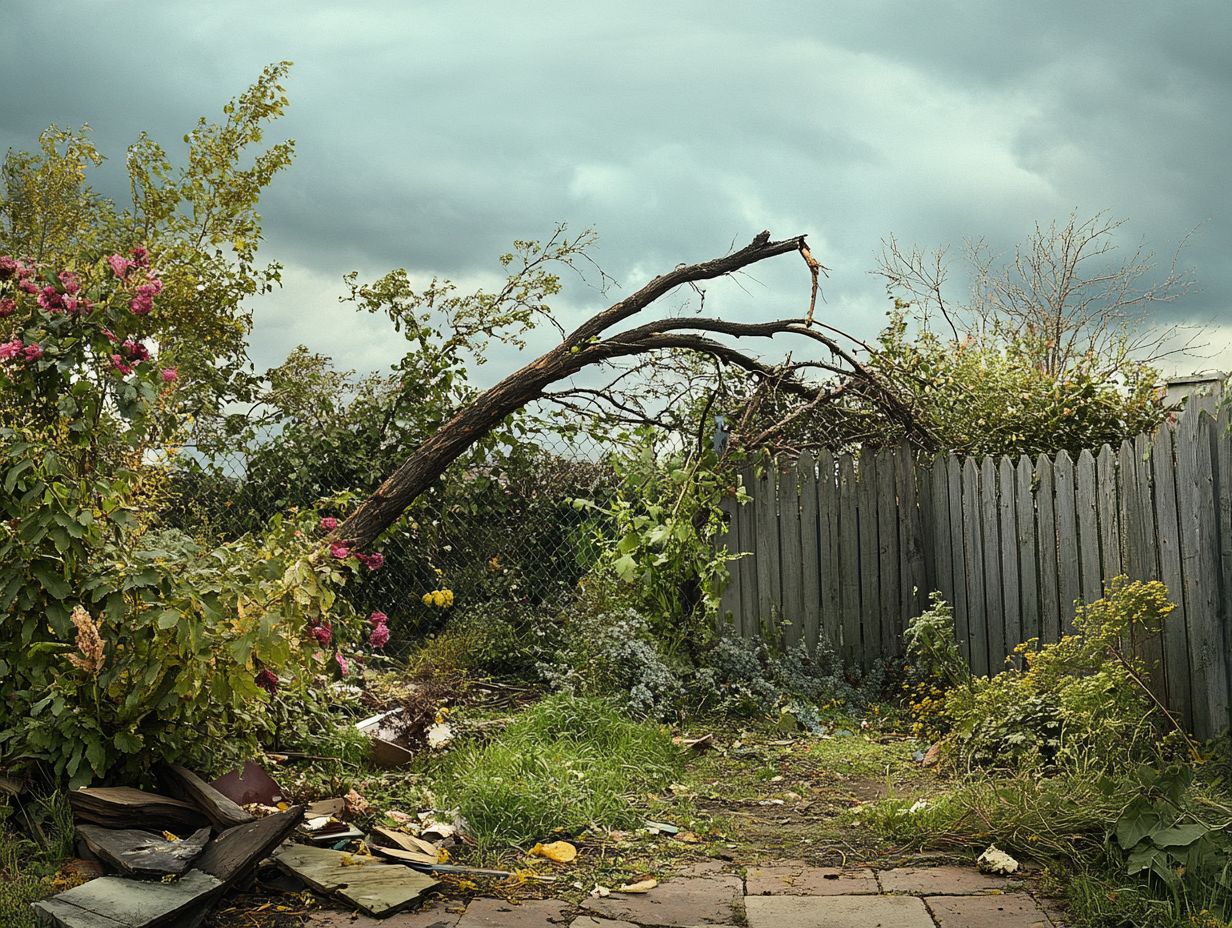
Home insurance typically covers damage caused by fire, theft, and natural disasters, but does not always cover landscaping damage. For instance, it’s important to understand whether home insurance covers structural damage, as landscaping damage refers to any harm to plants, trees, or other outdoor features on your property. To file a claim for landscaping damage, document the damage and follow the necessary steps outlined by your insurance provider.
Understanding Home Insurance Coverage
Understanding home insurance coverage is essential for homeowners looking to protect their property and assets against potential risks.
Homeowners insurance generally includes a policy detailing various types of coverage, with dwelling coverage being a key component that protects the structure of your home.
Familiarize yourself with your coverage limits and the specific risks included in your policy. This ensures you are well-protected from events such as fire, theft, and natural disasters.
Grasping these details can make a significant difference when filing insurance claims and securing your peace of mind.
What is Covered and What is Not?
Homeowners insurance offers a crucial safety net against various risks, but it s essential to understand exactly what is covered and what isn’t in your policy.
Typically, risks like fire, lightning, wind, hail, and vandalism are included, while exclusions may encompass floods and certain types of landscaping damage.
Consider a kitchen fire; it can lead to repair costs that soar into the thousands, depending on the severity of the damage and the materials involved. Remember that while wind damage is generally covered, you won’t be protected if the damage results from neglect or lack of maintenance.
Consider adding add-ons to your policy that expand your coverage, such as for home businesses or valuable personal property. This can provide additional peace of mind should an unforeseen event occur.
Types of Damage Covered by Home Insurance
Home insurance serves as your safeguard against a range of potential damages that could jeopardize your property and financial well-being.
This coverage typically includes damage from specific risks, such as fire, storms, and other unforeseen events that could lead to significant repair costs.
Homeowners insurance policies usually detail dwelling coverage, which protects the physical structure of your home and may also extend to other structures on your property, offering you a robust safety net for your valuable assets.
Fire, Theft, and Natural Disasters
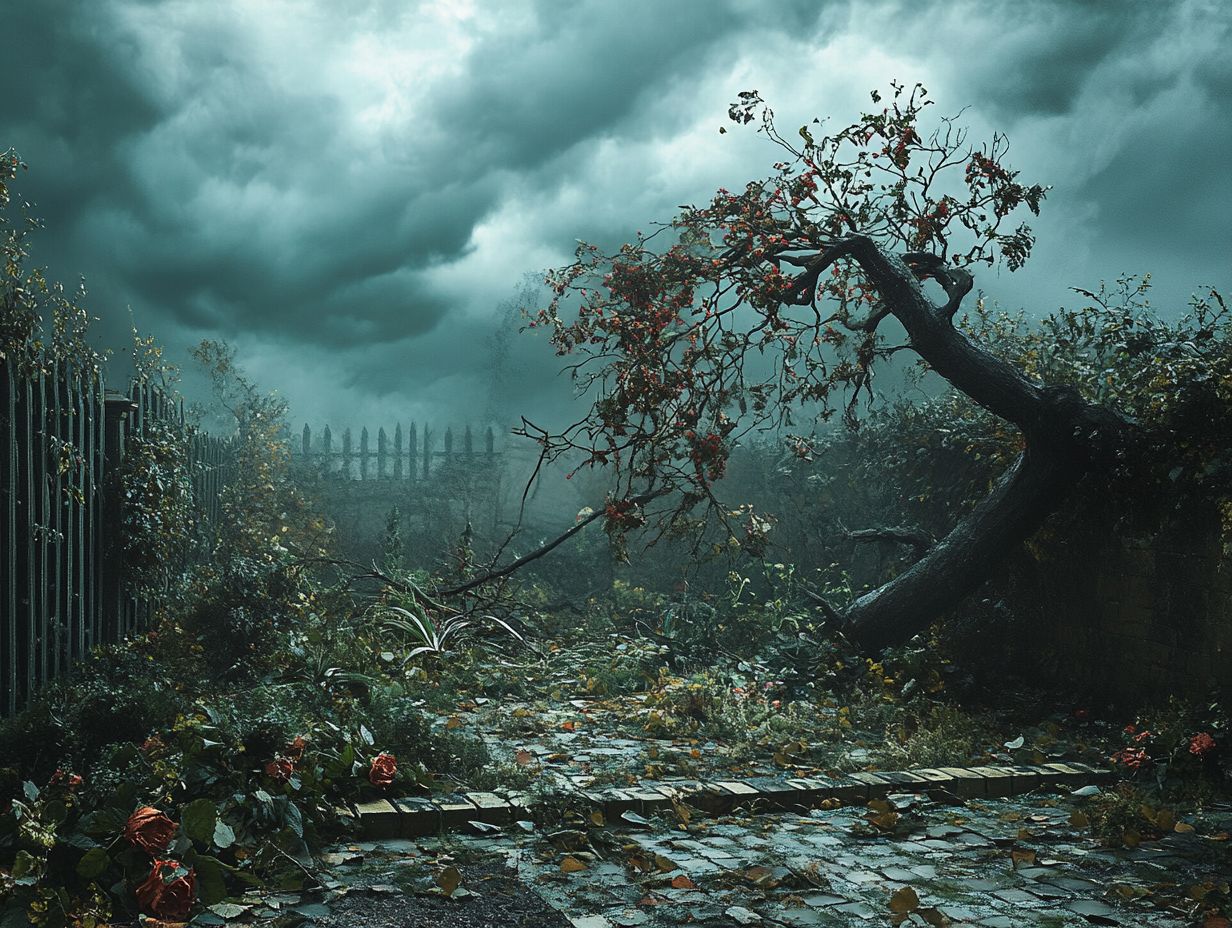
Fire, theft, and natural disasters pose significant risks for homeowners. It’s essential to understand how homeowners insurance covers these events.
Typically, fire damage whether caused by an electrical fault or a lightning strike is covered. This allows you to file a claim for necessary repairs and restoration. Theft-related losses and damages from natural disasters, such as floods and storms, may also be covered, providing crucial financial relief during tough times.
Understanding the nuances of these policies can profoundly impact your readiness for such unfortunate events. When it s time to file a claim, document the damage thoroughly. Take photographs and keep relevant receipts.
Coverage types can vary widely. For example, while standard policies might cover fire damage, flooding often requires additional coverage or a separate policy. Be aware of deductibles and coverage limits, as these factors directly influence your out-of-pocket expenses.
Hurricanes and earthquakes are often excluded from coverage. Knowing what s not covered can save you from unexpected costs when you need financial help the most.
Landscaping Damage and Home Insurance
Landscaping damage can significantly affect the overall appeal and value of a home. Yet, many homeowners remain unaware of how their insurance policies address such incidents.
Your homeowners insurance may include landscape coverage, protecting against specific types of damage to your outdoor spaces, like storms, pests, or accidents involving landscaping tools. However, it’s important to understand whether home insurance covers tenant damage as well.
By understanding the intricacies of landscaping damage coverage, including tree removal and shrubbery damage, you can be well-prepared for potential insurance claims related to your cherished gardens and yards.
What Counts as Landscaping Damage?
Landscaping damage refers to harm done to outdoor features like trees, shrubs, and ornamental plants. This type of damage can arise from covered perils such as storms, fire, or vandalism, often requiring tree removal or repairs to broken fencing.
Knowing what qualifies as landscaping damage is essential for evaluating your insurance coverage and preparing for potential claims.
For instance, you might face issues like uprooted trees after a heavy storm, shattered garden ornaments from hail, or damaged sod due to wildlife. Each incident demands careful assessment to determine the extent of the damage and associated repair costs.
Working closely with your insurance agent can help you navigate the claims process. Make sure to provide all necessary documentation, such as photos of the damage.
It’s also vital to be aware of common exclusions, such as damage from neglect or normal wear and tear, which could impact your ability to file a successful claim.
How is Landscaping Damage Covered?
Coverage for landscaping damage can vary significantly in homeowners insurance policies. Some policies may include coverage for items like shrubs and trees damaged by storms, while others may impose surprising limitations and exclusions.
Consult your insurance agent to grasp the full extent of your coverage, especially regarding landscaping tools that might inadvertently cause damage.
Consider scenarios like hailstorms or high winds, which can wreak havoc on your landscape. Document the damage with photographs and gather all relevant information before contacting your insurer.
Reviewing your policy details with an insurance agent is crucial for clarifying what is covered and exploring adjustments that could enhance your protection. Increasing coverage limits or adding specific endorsements can provide extra security for valuable trees or elaborate gardens that would be costly to replace.
Contact your insurance agent today to review your coverage and be prepared for any event!
How to File a Claim for Landscaping Damage
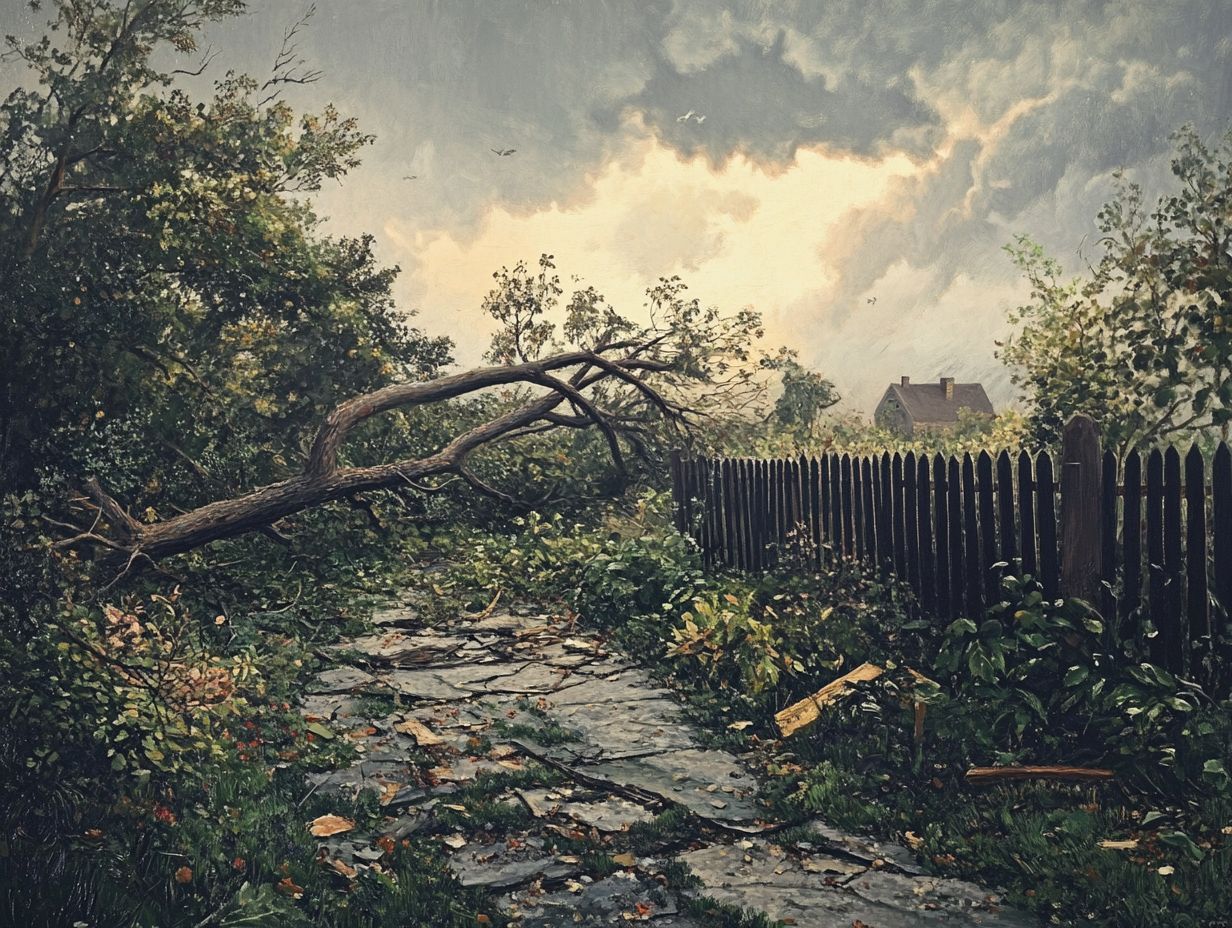
Filing a claim for landscaping damage demands precision and a thorough understanding of your homeowners insurance policy.
Begin by assessing the extent of the damage. Capture detailed photographs and collect all relevant documentation to support your claim.
Familiarizing yourself with the necessary steps and required paperwork is crucial. This knowledge will streamline the claims process, allowing for quicker repairs and protecting your valuable investment.
Steps to Take and Documentation Needed
Successfully filing an insurance claim for landscaping damage requires following a few simple steps and gathering specific documentation.
First, promptly notify your insurance company and document the damage with clear photographs and detailed written descriptions. Collect receipts for any repairs, estimates from landscaping professionals, and other relevant documents to bolster your claim.
After notifying your insurer, review your policy carefully to understand your coverage limits and any specific exclusions that may apply. Create a comprehensive list of all damaged items along with their estimated values.
Act fast! Many insurers mandate that claims be filed within a specific timeframe, often just a few weeks after the incident.
Stay vigilant about potential pitfalls, like underreporting damages or neglecting to keep a detailed record of all communications with your insurer. By maintaining organized files, you can streamline the process and prevent unnecessary delays, ensuring a smoother resolution.
Preventing Landscaping Damage
Preventing landscaping damage is crucial for enhancing aesthetic appeal, preserving property value, and minimizing potential insurance claims.
You can take proactive steps in your yard maintenance by choosing resilient landscaping options and reinforcing trees and plants to withstand storm damage.
By implementing these preventive measures, you significantly reduce the risk of damage, safeguarding your investments against unforeseen events.
Tips for Protecting Your Landscaping
Protecting your landscaping from potential damage requires proper planning, diligent maintenance, and informed choices. Regularly assess your yard, focusing on the health of your trees and plants, especially those susceptible to storm damage or pests.
Strategies like mulching, ensuring proper irrigation, and selecting resilient plant species can enhance your landscape’s durability. Additionally, engage in seasonal tasks such as pruning trees, checking drainage systems, and applying organic fertilizers to fortify your greenery.
Embrace sustainable practices like xeriscaping, which reduces the need for irrigation, or introduce native plants. These not only conserve water but also invite beneficial wildlife into your yard. By investing in preventive measures, you can reduce the risk of damage and positively impact your insurance claims, showing your diligence in care, which could ultimately boost your property value over time.
A well-maintained landscape often translates to improved curb appeal, making your property more attractive to potential buyers.
Frequently Asked Questions
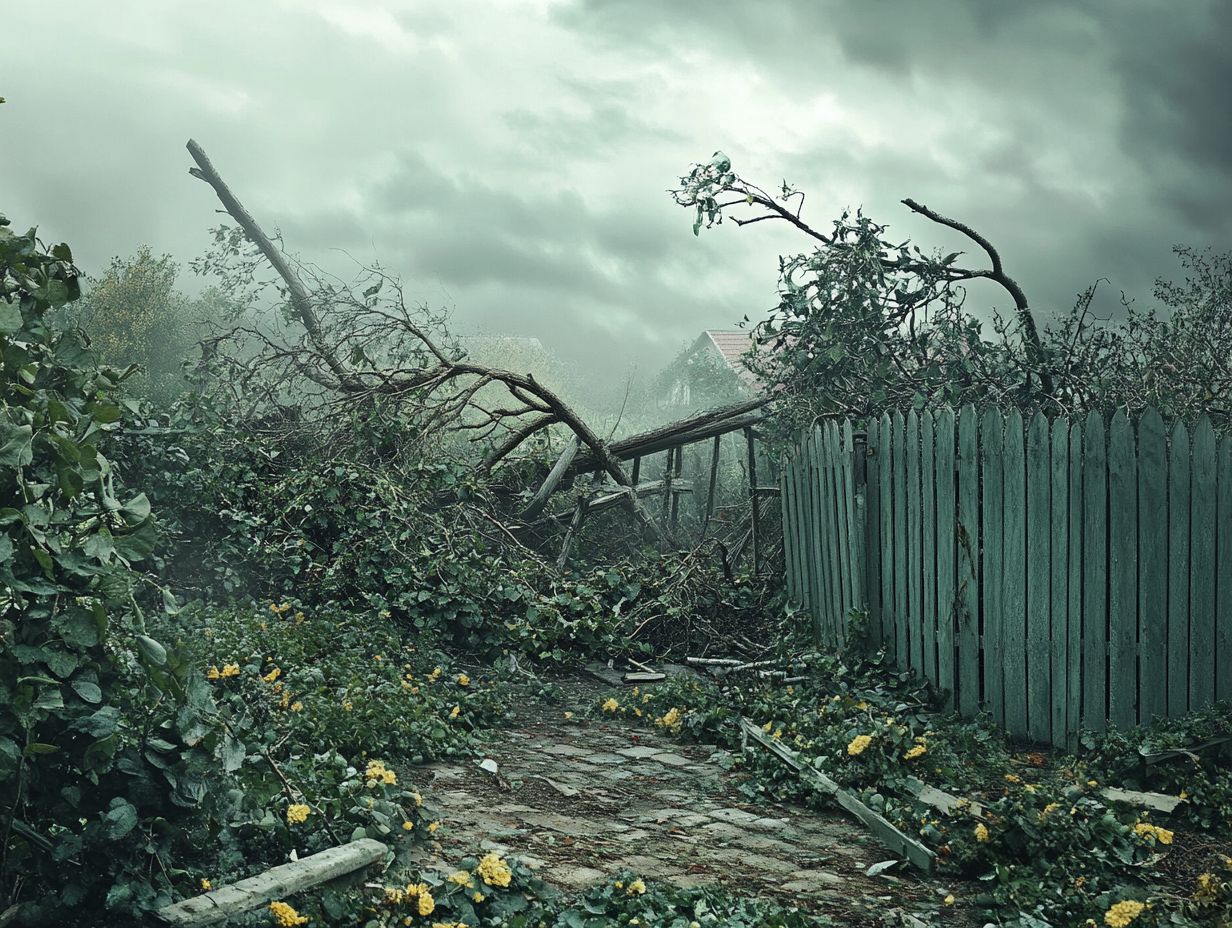
What is landscaping damage and does homeowners insurance cover it?
Landscaping damage means harm to outdoor features like trees, plants, or hardscapes. Whether homeowners insurance covers this type of damage depends on your specific policy and what home insurance covers regarding the cause of the damage.
What are common causes of landscaping damage?
Landscaping damage can result from various factors, including severe weather events like hail, lightning, and windstorms, as well as accidents involving vehicles or heavy machinery. Vandalism or theft can also cause damage.
Take action today to protect your landscaping and consult your insurance provider for specific queries!
El seguro de hogar est ndar cubre t picamente el da o al paisajismo?
En la mayor a de los casos, las p lizas de seguro de hogar est ndar no cubren el da o al paisajismo. Algunas p lizas ofrecen cobertura limitada para eventos espec ficos, como da os por tormentas o incendios.
Existen pol ticas adicionales o opciones de cobertura para proteger contra el da o al paisajismo?
S , hay opciones adicionales que pueden ofrecer una mejor protecci n para su paisajismo. Esto incluye coberturas extra en su p liza de hogar o p lizas independientes dise adas para paisajismo.
C mo puedo asegurarme de que mi paisajismo est cubierto por el seguro?
Revise cuidadosamente su p liza para entender la cobertura disponible. Considere agregar opciones extra para proteger su paisajismo, dependiendo de su valor.
Puedo presentar una reclamaci n por da o al paisajismo causado por mi propia negligencia?
Generalmente, el seguro de hogar no cubrir da os causados por su propia negligencia. Mantener su paisajismo en buen estado es crucial para prevenir da os y asegurar su protecci n.

